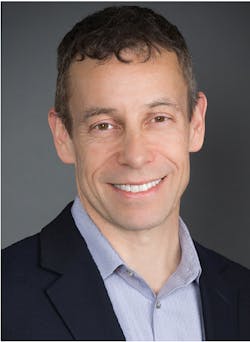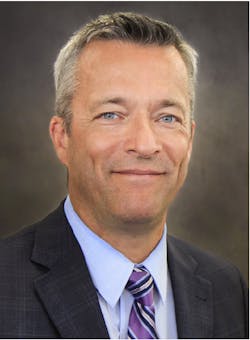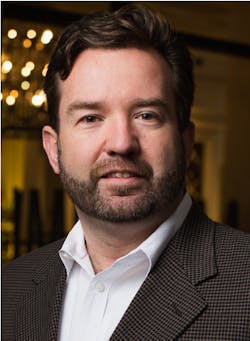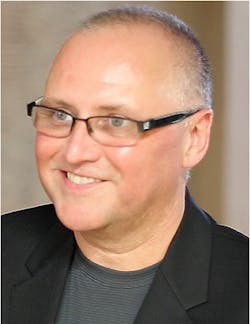From Big Data and Blockchain to increased investments in both capital expenditures and next-generation recruitment, 2018 promises to be an extraordinary year of urgent opportunity and global innovation for our industry.
And that’s a good thing, too, because fears of a constricting marketplace and tightened purse strings are still perceived to be out there, somewhere, perhaps 18 to 24 months down the road. But the prevailing mood now seems to be that firms should make the most of the wide-ranging opportunities at hand, not just for their own bottom lines, but for the advancement of our industry, as a whole.
Just from a technology standpoint, alone, there seems to be broad agreement that we are on the cusp of a golden age of improved project collaboration and delivery, enhanced facilities operations and maintenance, increased efficiencies and more sustainable practices.
With all this in mind, we touched base with several industry thought leaders to get their sense of what’s ahead across multiple market verticals, both domestically and internationally. Here’s how they answered our questions about what to expect in 2018:
UDI MEIRAV, CEO, enVerid Systems Inc., Needham MA
There are at least four trends that I see playing a role:
Variable refrigerant flow (VRF) systems, which were introduced in Japan in 1982 and Europe in 1987, will increase penetration in the US – taking more market share and mindshare. The main driving factors for this are energy efficiency, nonetheless a lot of secondary benefits are also being increasingly recognized by the engineering community, like modularity, sub-metering, and customer satisfaction with more precise comfort control. One remaining challenge for VRF systems is handling outside air, and the need for dedicated outside air systems that are costly. New technologies can potentially reduce this cost and improve the overall energy efficiency of the system;
Climate change, urbanization and people’s basic expectations of comfort are increasing demand for air conditioning (AC). More days require AC; More days of extreme heat every year; More days now where HVAC systems can’t keep up with load, a relatively small incremental increase in peak temperature has a huge impact on AC;
Awareness of indoor air quality, and demand for better solutions, is growing worldwide.
There is a growing acceptance in changing design rules to handle changes in climate, opening the door to new designs and even new technologies, and rendering more and more of the existing systems inadequate for the changing climatic conditions;
Awareness of indoor air quality, and demand for better solutions, is growing worldwide. China is arguably the epicenter of this demand, both commercial and residential; we are seeing air quality concerns on the rise in Europe too; but perhaps the newest trend is IAQ awareness in the commercial and education sectors in America, where wellness in general and IAQ in particular are becoming increasingly important components of “green buildings”.
===================================
BILL GRAY, President, Uponor North America, Apple Valley MN
We’re excited about 2018 for many reasons, including a strategy that targets a renewed focus on the customer experience, innovation, and helping ourselves and our contractors solve the skilled-labor challenge.
To help ensure our products are available when and where customers need them, we will complete two new manufacturing expansions: a 58,000 sq-ft facility in Apple Valley, MN, and a 237,000 sq-ft plant in nearby Hutchinson, MN.
Also, innovation remains a focus, with advancements in pipe, fitting and installation solutions on the materials, mechanical, smart-connected and digital fronts. Most notable among these is our early-2018 foray into the “intelligent water” category.
Among the most notable innovations is our early-2018 foray into 'intelligent water'.
Initiatives to solve the skilled-labor issue continue, including efforts to recruit women working in manufacturing. Since 2014, we’ve increased the number of females in our plant from two to more than 30 today. Additionally, we began our three-year registered apprenticeship program with the Minnesota Dept. of Labor and Industry; remain one of six Minnesota businesses in a federally funded STEM mentoring and internship program for local high schools; and work with industry associations to promote skilled trades as viable career option.
Overall, 2018 leaves us cautiously optimistic. Leading indicators like consumer confidence, housing starts and nonresidential growth estimates look promising. However, this is offset by concerns over political volatility.
===================================
KIRK THORNE, Executive Vice President, Daikin Applied Americas Inc., Minneapolis MN
“We have a very positive outlook for 2018,” says Thorne, who heads sales and marketing for the subsidiary of the mammoth Daikin Industries Ltd., Osaka, Japan. The manufacturer of commercial HVAC systems has seen six straight years of double-digit growth in North America, Thorne adds, and this year is expected to continue that trend.
“The availability of capital is very strong, so there has been a real resurgence in capital investment,” he notes. “Companies are not holding back, and they are investing heavily in manufacturing projects that will run through 2019 and into 2020.”
Companies are not holding back and they are investing heavily in manufacturing.
Daikin Applied, itself, has not held back, last spring opening its own new $417-million Texas Technology Park outside of Houston. The sprawling, 4.23-million-sq-ft manufacturing facility is now fully operational, increasing the firm’s production capacity “substantially,” says Thorne.
===================================
IAN DEMPSTER, Senior Director of Product Innovation, Optimum Energy, Seattle WA
Building operators are starting to realize that they could be using data to much greater advantage. Operating data from BAS and EMS systems and equipment can tell you where the building is using energy, whether equipment is working correctly and efficiently, and whether the automation sequence is controlling the building systems effectively.
In the past, getting this data has been an issue because of building owners’ and operators’ justifiable data security and ownership concerns—they were saying no to Internet connections. That is changing fast, though. Building engineers are becoming a lot more knowledgeable about cyber security, data security and potential vulnerabilities in their systems, and are staying on top of security updates. The same is true of technology vendors in the buildings sector. Continued progress in this area is important because unconnected buildings that can’t access cloud-based analytics and optimization systems can’t benefit from new technologies that are constantly updating.
The next big focus is going to be making sure all the data gathered is put to use to make buildings operate better.
The next big focus is going to be making sure all the data and intelligence that’s gathered is put to use to make buildings operate better and more efficiently. Building operators right now are not necessarily closing the data loop and taking the actions that benefit their buildings the most. Feeding the results of data collection and analysis back into the building’s operating systems, and automatically optimizing them, is where we’re going to start seeing the real value in the Internet of Things.
===================================
PAUL DOHERTY, CEO, The Digit Group, Collierville TN
The Digit Group (TDG) is a smart cities technology consultant and planning firm with global clients that include the Mechanical Contractors Association of America (MCAA).
“Blockchain will be a real game-changer in 2018 and beyond, and it will prove to be of real value for HVAC stakeholders, both large and small,” predicts Doherty. “We are already using it on projects in China with billions of dollars at stake, and the benefits are real.”
Blockchain will prove to be of real value to HVAC stakeholders.
Doherty says he is still documenting those benefits now and expects to report to the industry on them later this year. What the heck is “blockchain”?
At its simplest definition, it is a form of technology designed specifically for optimizing the project supply chain, safely and efficiently, via new “smart contracts.” As Filip Ponulak, principal data scientist at Site 1001, told SmartCitiesDive.com this month, “Information shared via blockchain is considered more secure and resistant to alterations, [permitting] trusted transactions and agreements to be carried out among disparate parties."
For facilities management, smart contracts can be used to execute repeated supply or work orders.
===================================
JENNIFER SCANLON, CEO, USG Corp., Chicago
Encouraging and rewarding innovation is a key component of USG’s company culture, and we invest smartly in research and development. We have a state-of-the-art Corporate Innovation Center (CIC) located in Illinois, where a team of dedicated experts focus on creating and vigorously testing new products and technologies to ensure that we continue to push the boundaries of design and engineering.
In addition to the work being done at our CIC, USG is working in partnership with leading universities and technology companies to explore more ways to advance the built environment. USG has a significant opportunity to reimagine the role building products will play in the years ahead, and we are excited to see the developments that are yet to come.
Empowering younger generations to embrace STEM and manufacturing careers is essential.
Building a diverse and talented workforce is an essential piece of this strategy and it begins with inspiring and developing the next generation of innovators in STEM (science, technology, engineering and math). My passion for math and chemistry fueled my enthusiasm for USG’s products when I first started working here 15 years ago.
As someone who has found so much fulfillment studying STEM and working for a manufacturing company, I am a big proponent of math, engineering and science education, particularly for women, because it opens up unlimited possibilities for career opportunities. Empowering younger generations to embrace STEM and manufacturing careers is essential for growth in the industry – and is a personal passion for many employees. So together we strive to demonstrate that there are plenty of fulfilling roles in our field.
Ms. Scanlon's comments are excerpted from an interview conducted by the author last summer for BuiltWorlds.com.
About the Author
Rob McManamy
Editor in Chief
An industry reporter and editor since 1987, McManamy joined HPAC Engineering in September 2017, after three years with BuiltWorlds.com, a Chicago-based media startup focused on tech innovation in the built environment. He has been covering design and construction issues for more than 30 years, having started at Engineering News-Record (ENR) in New York, before becoming its Midwest Bureau Chief in 1990. In 1998, McManamy was named Editor-in-Chief of Design-Build magazine, where he served for four years. He subsequently worked as an editor and freelance writer for Building Design + Construction and Public Works magazines.
A native of Bronx, NY, he is a graduate of both the University of Virginia, and The John Marshall Law School in Chicago.
Contact him at [email protected].






